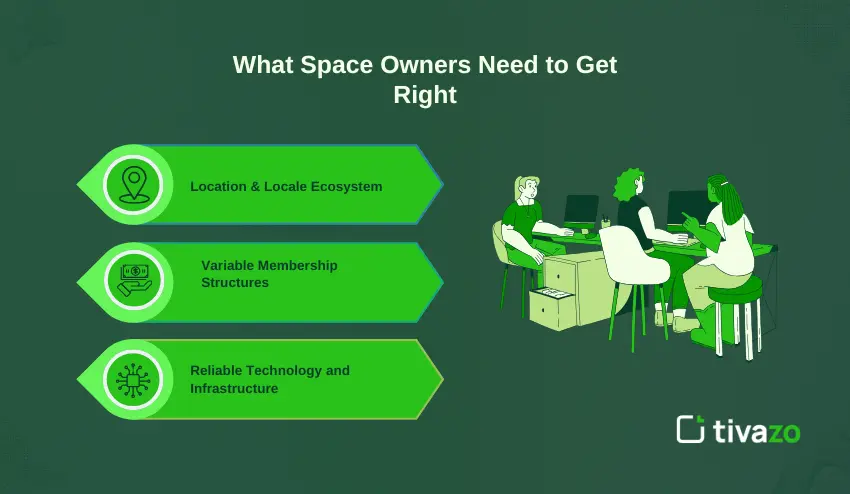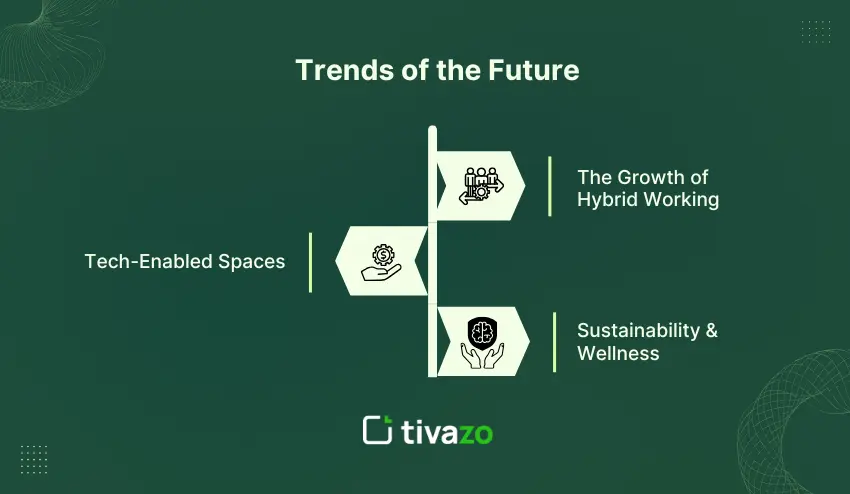Coworking spaces have become the new heartbeat of modern work. Whether you’re a remote professional tired of home distractions or a space owner aiming to attract thriving communities, the question remains the same: what makes a good coworking space? It’s not just about Wi-Fi speeds and coffee anymore; it’s about creating an ecosystem where productivity, connection, and flexibility coexist.
The coworking movement has evolved far beyond shared desks. For remote workers, it’s about finding spaces that inspire focus and belonging. For owners, it’s about designing experiences that blend comfort, culture, and business viability. As hybrid work continues to redefine how and where we work, understanding what defines a great coworking space has never been more crucial, both for those choosing one and those building one.
In this guide, we’ll explore the key ingredients that make coworking spaces exceptional, from layout and community culture to operational excellence and future trends. Whether you’re selecting your next workspace or designing one from scratch, this article will help you identify the traits, tools, and strategies that separate average spaces from outstanding ones.
What Is a Coworking Space? (Definition + Modern Evolution)

Coworking spaces are shared spaces where you will find people (e.g., freelancers, entrepreneurs, remote workers, etc.) from all over the world, employees working in companies and industries, and backgrounds working alongside one another in a shared work environment. The coworking spaces are very flexible in memberships, updated amenities, and community motivation/drive to increase productivity and networking.
What started as a niche idea for freelancers has ballooned into a worldwide phenomenon for the self-employed, remote workers, startups, and even the corporate crowd. Many coworking spaces are not simply just a place to sit down and work anymore, but instead an entire ecosystem combining workspace product design, fixing digital connectivity, and social interaction to enhance chance occurrences for innovation and connection, or even just chance conversations on the stairwell.
For example, imagine a hip loft with semi-private booths for focused work, open chairs for collaborative discussions, and events promoting networking between entrepreneurs, startups, and remote workers, all of which are characterized by a well-designed coworking space, vibe, and what the coworking culture represents.
Why Choosing the Right Coworking Space Matters for Remote Workers
Having the perfect coworking space can determine whether you thrive or merely survive as a remote worker. The freedom to work from home can feel liberating, but distractions, isolation, and a blurred line between work and life can create challenges. A purpose-built coworking space will resolve these pain points while allowing remote workers to have the structure, focus, and social energy without being confined to a corporate office.
“Third Place” Away From Home or Coffee Shop – Why Does it Matter?
Sociologists refer to coworking situations as “third places”, a place in our lives where community and creativity happen, distinctly different from our homes and our work. Coworking spaces are quieter than coffee shops or our homes, which can often feel very isolating. In coworking spaces, private rooms develop opportunities for deep focus work, conference rooms foster meetings and project collaboration, and shared lounges provide opportunities for spontaneous conversations. Working within our autonomous spaces by ourselves, and engaging when we want to connect with others, is what makes these coworking spaces desirable for today’s remote generation.
Some of the Key Painpoints for Remote Workers — and How Coworking Spaces Address Them
- Distraction: Work Zones and Comfort: Privacy and ergonomic workstations help us focus.
- Isolation: Community and Shared Spaces: Shared lounge and community activities allow us to have human contact.
- Routine Fatigue: Flexibility and Inspiration: Access and location help renew motivation and creativity.
- Meeting Rooms and Amenities: Access to meeting rooms and amenities provides professionalism for meetings with clients.
What Space Owners Need to Get Right: What Makes A Good Coworking Space

When we think of coworking space ownership, the conversation tends to begin (and end) in tandem with the sale of desks. The reality, however, is that the purpose of a coworking space includes thinking about ways to create a space that does not just attract members but also encourages regular visits each month, and fosters member happiness and productivity. A good coworking space will encompass an ideal location, flexible membership structures, and good workflow, appropriate technology, to shape a consistent and positive experience for its varied members.
Location & Locale Ecosystem
The fundamental element defining every great coworking space is its location. Neutral to any branding represented by your coworking space, a location with any mix of transit options, cafes, gyms, and public amenities allows flexibility and a competitive edge against other nearby coworking spaces. The location ecosystem is also crucial; being near startup communities, the creative district, or universities will continuously help attract engaged/motivated communities.
Pro tip: Undertake a quick 15-minute commuter assessment to help define your member demographics.
Variable Membership Structures & Income Sources
Contemporary professionals want flexibility. By providing options for hourly drop-ins, day passes, dedicated desks, and private offices, you can accommodate individuals freelancing and small teams.
In addition to memberships, consider passive income sources, such as event booking, workshop programming, and virtual office packages. These passively add to your revenue stream and create added benefit by offering more services that your brand can stand by.
Reliable Technology and Infrastructure
Slow wi-fi or unreliable technology can kill productivity faster than just about anything else. A “good” coworking space needs to have enterprise-grade connectivity, back-up power, well-maintained printers, video-conferencing rooms, and soundproof call rooms. These aren’t even considerations anymore; they are expectations.
Implementing workspace management systems (like OfficeRnD or Nexudus) can automate billing, access control, and booking work to decrease friction for members or staff.
Operational Readiness Checklist for Owners
- Location accessible by public transport
- Diverse membership tiers (hourly, daily, dedicated)
- Secure, high-speed Wi-Fi + power redundancy
- Booking system + member app
- Dedicated maintenance and IT support
Designing for Productivity and Community: Environment, Zoning & Culture
When a shared workspace is functioning well, it’s not just all about the walls and the Wi-Fi. It’s about what is happening inside of them. In any environment, great design will enhance both focus and connection, so members stay longer and engage deeper. Owners who turn to thoughtful zoning and cultivating a culture will often see increased retention, positive reviews, and greater organic growth.
Zoning — Quiet Zone vs. Collaboration Zone vs. Social Zone
Each professional works in their own way. So, the way space is constructed should contemplate that. Hubs typically offer three types of zones:
- Quiet zone for deep focus, individual work
- Collaboration area for brainstorming or meetings.
- Social zones such as lounges or cafés for informal networking.
Located in varying distances, this balance of space minimizes noise conflicts while allowing members to take control of their own experience, which is often the key to long-term satisfaction.
Ergonomics, Lighting & Acoustics
A productive environment is about comfort. Ergonomic chairs, adjustable desks, natural lighting, and acoustics are all key features that enhance focus and comfort. Poor light and echo-y walls can ruin concentration rather quickly, while thoughtfully chosen plant life and warm textures create calm and room for creativity.
Think about design as an invisible instrument of productivity, not as decoration.
Creating Community Culture — Events, Networking & Belonging
No matter how stunning a workspace is, it can feel uninviting without people. Creating, hosting, or facilitating workshops, lunch and learns, or social mixers will help develop connections between coworkers. A dedicated community manager, someone to remember names, recognize celebrations, and connect others with common goals, will help transition a purely transactional space into a relational space.
Community culture is the “secret sauce” to transform a desk into a network and a member into an advocate.
Customizing for Remote Employees: The Features That Matter
Not all co-working spaces are equally beneficial for the remote worker. It has to offer a combination of privacy, flexibility, and amenities that will enable members to work productively while feeling connected.
Privacy vs Openness – Striking a Balance in Focus and Engagement
Remote employees need workspaces that give them opportunities to be productive without feeling alone. Open, collaborative spaces with adjacent private booths or quiet corners give members a chance to concentrate. Having both options enables all styles of working, from workers to small teams.
Flexibility in Access and Membership Agreements
Today’s professionals want to feel like they have some level of autonomy and flexibility. With 24/7 access, hot desking, and worldwide membership networks, remote workers can properly access facilities accommodating their own work schedules and travel plans. Membership agreements should still offer different hourly, daily, or monthly access for diverse work situations.
Amenities Beyond “A Desk”
The small things matter in productivity and satisfaction:
- Soundproof cross-booths to take private calls
- Wellness spaces are comprehensive for relaxation or quiet rooms.
- On-site café or snack areas
- Desktop printers, monitors, or office tech
Achieving Operational Excellence and Business Models for Space Owners
Operating a successful co-working social space is more than looks-it’s the combined strength of smart operations, financial foresight, and member satisfaction. Owners who have awareness of the business side of flexible office space can produce communities that are sustainable, profitable, and offer exceptional experiences.
Pricing Tiers and Occupancy Projections
By creating multiple levels of membership (i.e., hourly, daily, dedicated desk, and private office), your organization can service several types of members: freelancers, start-ups, and small teams alike. Pricing tiers and planning for occupancy levels will ensure you have the opportunity to maximize space and revenue, and will create a positive user experience to avoid overcrowding members.
Ancillary Revenue — Event Space, Partnerships, and Services.
With memberships being a primary form of revenue for co-work, additional opportunities for revenue that can add value to the members’ businesses help build the financial sustainability.
- hosting workshops, seminars, networking events etc,
- have a partnership for caterers for member events or wellness services
- having virtual office packages, mailing addresses, or meeting room opportunities.
These services will increase the overall profitability of the business while increasing the experience of the members’ benefits, ultimately making the space more attractive and competitive.
Valuable KPIs: Satisfaction, Churn, and Revenue Per Seat.
Three basic KPIs for any flexible workspace:
- Member satisfaction: regular surveys and net promoter score.
- Churn: how many members leave on a monthly basis.
- Average revenue per seat: understanding the profitability of workspace.
Measuring these metrics gives you the ability to make informed decisions for your operation.
Trends of the Future & How to Stay Ahead of the Trends
The market for shared or flexible workspaces is changing rapidly, fueled by pandemic-driven blended work environments, changing technology, and constantly evolving member expectations. Owners and remote professionals alike should anticipate future trends to stay competitive and continue to be productive.

The Growth of Hybrid Working & Distributed Memberships
With remote work being the dominant work mode, many professionals are finding a mix between working on site, working from home, and renting space in community collaborative hubs and/or satellite locations or offices. The ability to offer flexible space memberships that allow them to work part-time in a multi-location and multi-workplace, means they can appeal to a wider audience while retaining existing members due to the need for mobility and choice.
Tech-Enabled Spaces: Smart Building, Analytics and Member Apps
Modern collaborative and flexible membership workspaces use technology to enhance the experience for their members and improve operational and space management. Features like app-enabled desk booking, IoT-enabled lighting and climate controls, and dashboards to monitor space occupancy and member usage all help owners actively manage their spaces while giving members the comfort and independence in their workspace.
Sustainability & Wellness: A Space Differentiator
Initiatives related to sustainability or eco-friendly products, including energy-efficient lighting, waste management and recycling programs, and eco-friendly furniture, are great avenues to connect with members who are focused on environmental issues. Other popular initiatives directly tied to initiatives related to wellness, including quiet zones or rooms, standing desks, work-life balance programs, wellness coaches, and mindfulness rooms, create a healthier community and improve retention and experience in memberships and engagement in events.
Conclusion
Choosing or creating a coworking space is more than where the desks are, or how good the Wi-Fi is — it is about creating a place to enable productivity, community, and flexibility at the same time. For a remote worker, a good shared workspace can improve focus, reduce isolation, and create a level of professionalism in the environment. For the coworking space owner, understanding how to meet the individual needs of members, streamline and operate effectively, and create a culture of thriving individuals will allow the business to succeed long-term.
By developing a strong understanding of location, layout, amenities, and community, a user and/or an operator will optimize the value that coworking has to offer modern-day collaborative spaces. If you are combining a tech solution, a flexible membership, and a wellness offering into your workspace, these spaces will separate themselves from what is average.
Whether a remote worker is trying to find the next great working environment or the space owner is designing a coworking space that attracts and retains members, we believe this reflection and accompanying checklists will assist in navigating the process. What is more, if you invest in the design of your space, the operational inefficiency of the space, and your members, we truly believe you will create an amazing coworking space.



